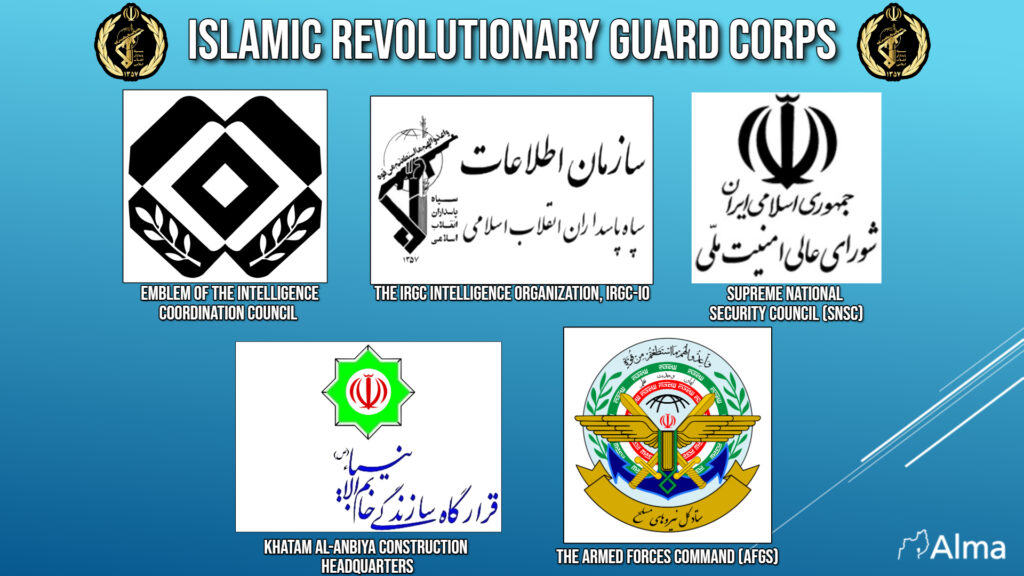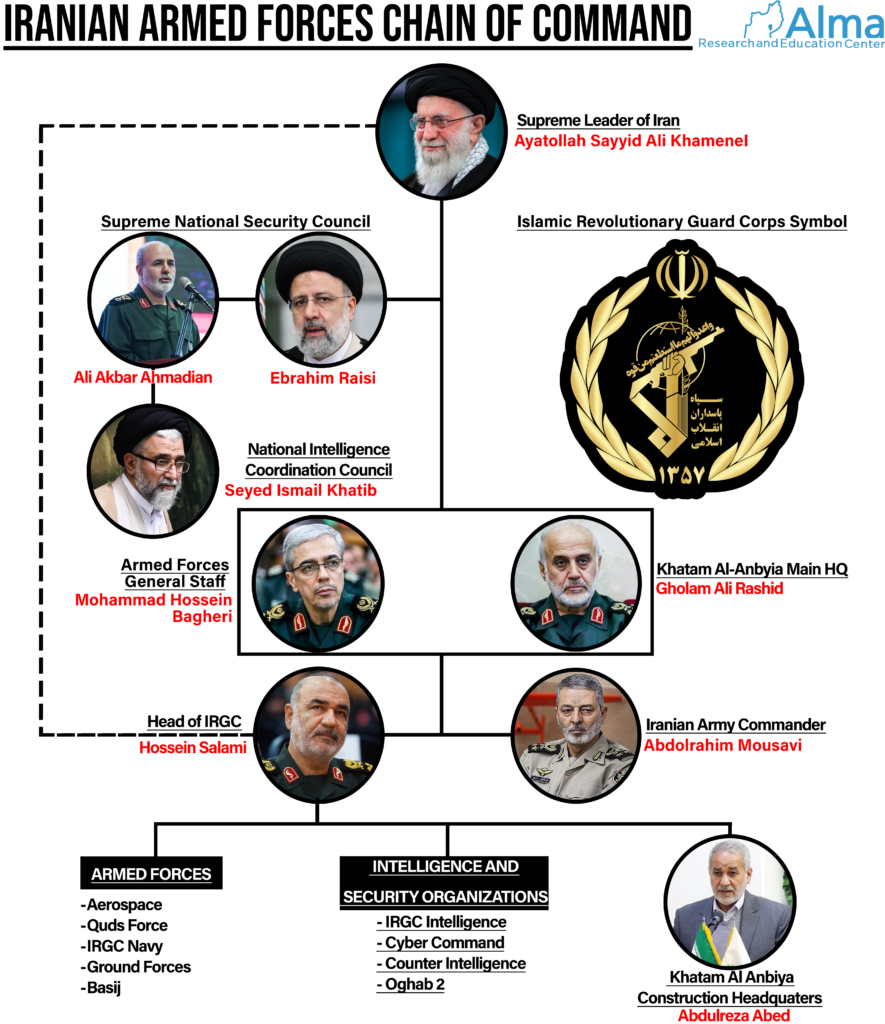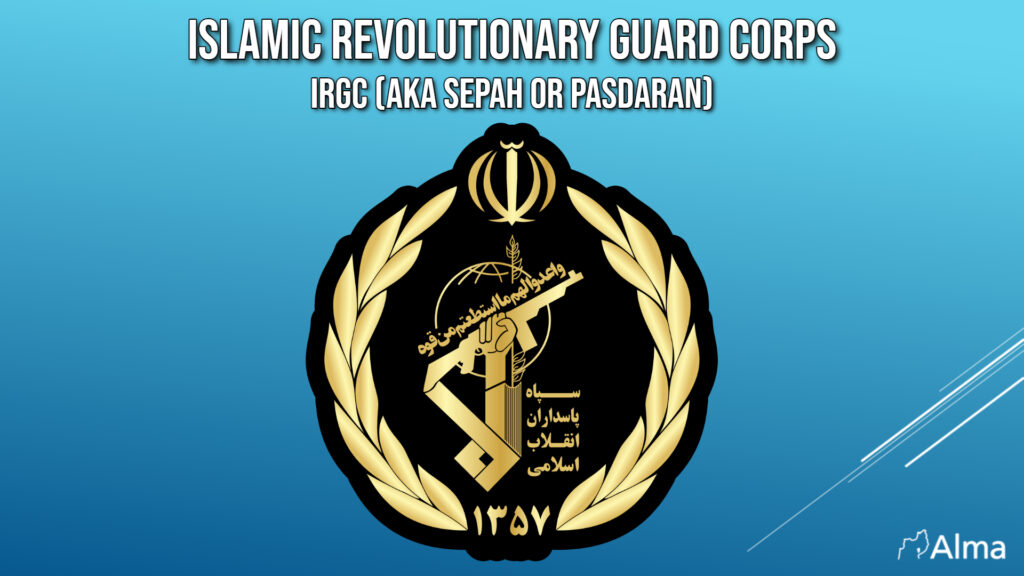General Introduction
IRGC (aka Sepah or Pasdaran)
The development and evolution processes that The Islamic Revolutionary Guard Corps (IRGC) has gone through, since its establishment in 1979, have reached the point where they are one of the strongest and most influential organizations in Iran today. This power buildup has placed the IRGC in a significant influential position in all of the country’s centers of power and established itself as one of the main elements the regime relies on to ensure its stability. Furthermore, these processes have also made the IRGC a key factor in the design and implementation of Iran’s foreign policy and its efforts to increase regional influence.
As part of the aforementioned processes, the IRGC’s military power was also strengthened and today it is an army in every respect, operating in parallel with and separately from Iran’s regular army (known as Artesh).
The main branches operated by the IRGC are the Navy, Aerospace force, Ground forces, Basij forces, and Quds force. Each of these branches operates independently, with a command foundation and an orderly structure, divided into units, bases, geographical sectors, etc.
Despite the fact that both the Artesh and the IRGC are officially subordinate to one commander, due to its status and special role, the IRGC receives a considerably larger budget and investments than the Artesh. In addition, IRGC commanders also have close and direct connections to the Supreme Leader’s office, and they often operate in full compartmentalization from the rest of the country’s security branches. The same is true for the IRGC’s intelligence and security branches.
In fact, one can say the Iranian regime uses a command structure which contains a built-in “by-pass” mechanism. In this system, there is a formal chain of command which consists of military and security organizations as well as supervisory institutes, but there is also an official by-pass in which the Supreme Leader can directly command and oversee the IRGC.
This structure stems from the IRGC’s status and significance for the regime but also due to the ever-present fear from the formation of new centers of power within the security establishment, that can endanger the regime.
This report, which is based on open sources, is an introduction to future reviews that we will publish regarding the IRGC’s military branches mentioned above.
In this report, we will review Iran’s security and foreign policy concepts, the IRGC’s role in implementing them, the command-and-control structure, the main institutions in Iran’s security establishment, as well as the main security organizations operating within the IRGC.








